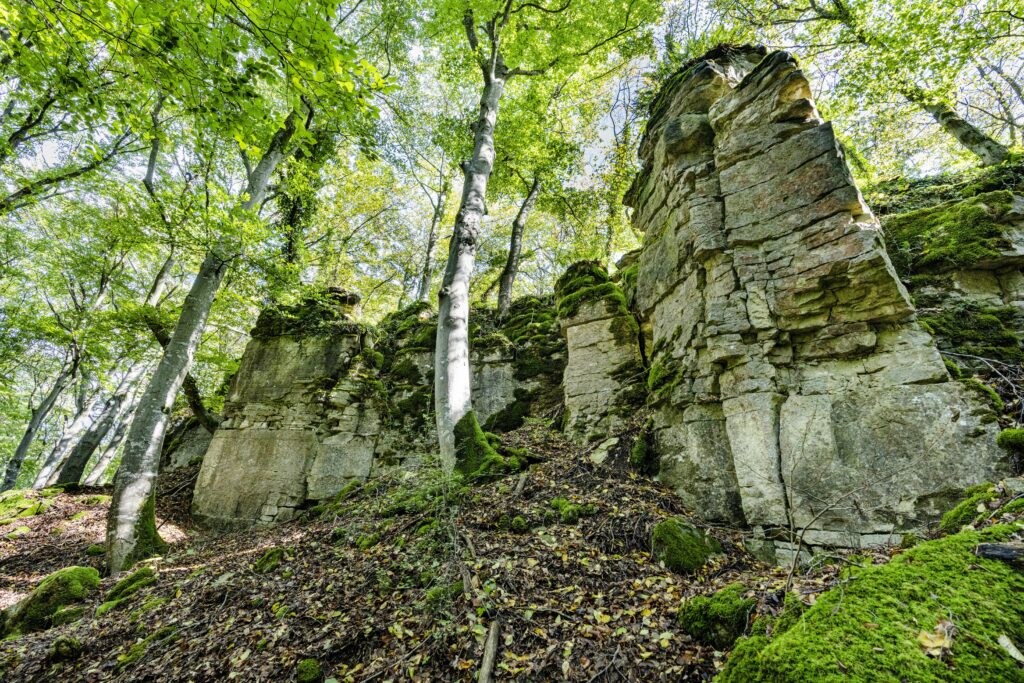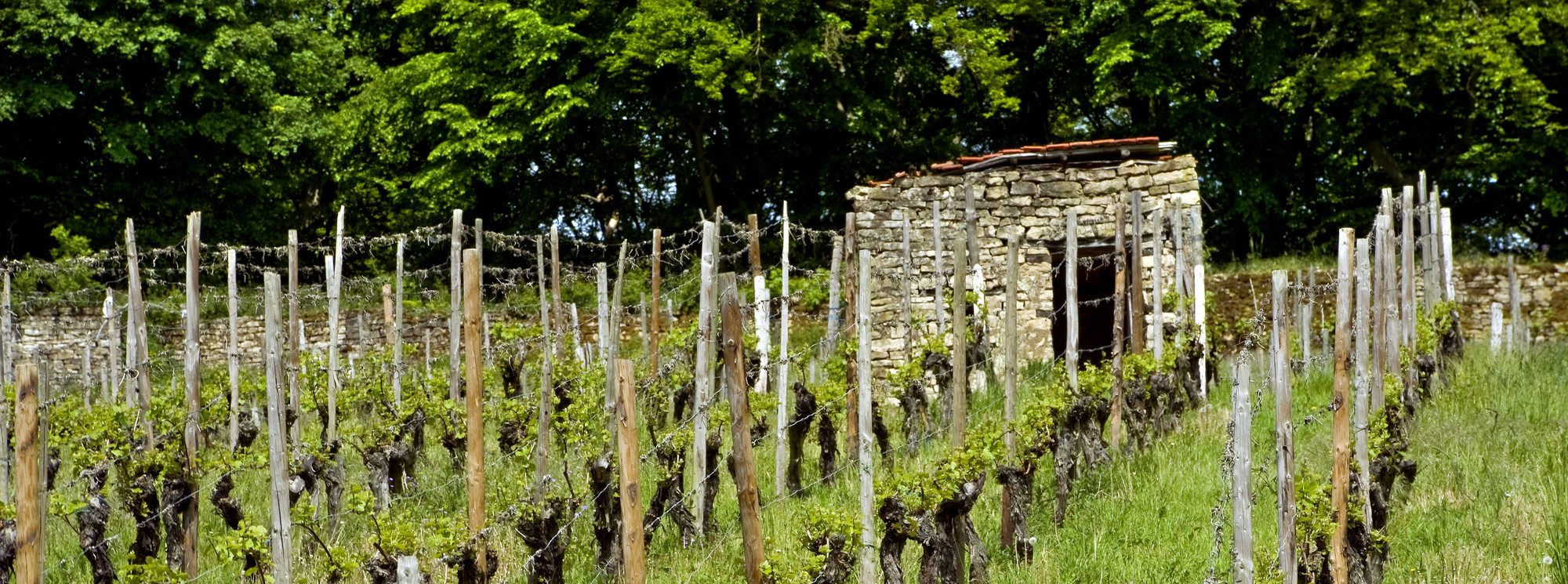The Hëlt near Rosport is built up from the layers of the middle (marl with gypsum layers) and upper “Muschelkalk” (dolomite). The gypsum layers were quarried in open quarries in the past. On the north-west side of the hill, a landslide has taken place, leaving an irregular relief in the marls. The landslide reached into the dolomite, whose rock face collapsed. In the area of the landslide, the stone content of the soil increases extremely from the bottom to the top; on the upper slope there is even hardly any fine material between the dolomite blocks, but mainly roots and humified organic matter. The landslide was triggered by erosion on the impact slope of the Sauer River at the foot of the hill. River terraces bear witness to the cutting of the Sauer into the subsoil. The large meander of the Sûre around the Hëlt was artificially cut through for energy generation.
The Hëlt was the geosite of the year 2022!

Dry grassland and orchids
On a walk on the Hëlt you can marvel at dry grasslands and orchids. Dry grasslands are meadows and pastures where water is the limiting factor. They are mainly formed on shallow soils that can store very little water and therefore dry out quickly when there is no rain for a long time. On the marly subsoil, larger calcareous dry grasslands occur on the Hëlt.
The lack of water and nutrients means that little grass grows on dry grasslands. Therefore, the dry grasslands used to be grazed mostly only once late in the year. The combination of water and nutrient deficiency and extensive grazing led to a special diversity of animals and plants on the dry grasslands. Among the best-known species are certainly the orchids, which are highly valued in nature conservation. Dry grasslands and the animal and plant species found on them are protected throughout Europe.
A visit in late spring is particularly worthwhile, as this is when the orchids are in bloom.

Vineyards and dry stone walls
Among the donations received in the 7th century by the monk Willibrord, founder of Echternach Abbey, were vineyards. In the Middle Ages, viticulture was greatly developed in the region. By the middle of the 20th century, however, viticulture had already been abandoned in many places, even in the climatically favoured valley of the Sauer. Today, only small relics in the Hëlt area near Rosport bear witness to the viticultural tradition in the nature park region. Five winegrowers currently cultivate around three hectares of vines here. They belong to the Moselle wine-growing region. Almost all the grape varieties grown there can also be found here: Riesling, Auxerrois or, for example, Pinot Blanc and Pinot Noir. The Elbling vine, which is over a hundred years old, deserves special mention. A real speciality of this small wine-growing region are the still numerous dry stone walls and the vineyard cottages built of natural stone. The dry stone walls that support the small vine terraces have completely disappeared in most wine-growing areas, as they hinder cultivation with machinery. What is interesting here is that they were built in the past, among other things, to facilitate cultivation – on foot and by hand – on the slopes. The walls in the Hëlt were built from dolomite stones quarried directly on site. These walls are fascinating in that they remain standing for decades, sometimes even centuries, and this without concrete or mortar being used in their construction. The art of dry construction consists precisely in building a stable wall without such a binder. This is why there are many cavities in a dry stone wall. This is one reason why they are a habitat for specific flora and fauna. For the nimble wall lizard (Podarcis muralis), for example, they offer numerous hiding and hunting opportunities. Plants such as wallpepper (Sedum acre), with their thick leaves through which less water evaporates, are particularly well adapted to the dry and hot living conditions on the walls.
